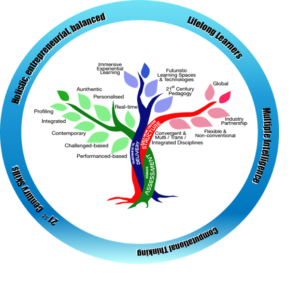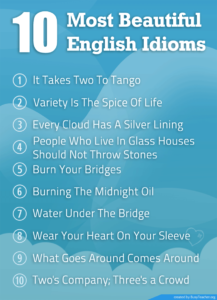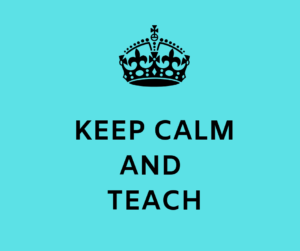First of all, you need to be UTM staff.
Next, log in to MYUTM (using your ACID and password) to go to UTM Staff Portal (Portal Staf UTM).
On your left hand side under Sistem UTM, scroll down to Akademik (click). Choose Profile Akademik (click).
On your right hand side under Quick Links, choose and click Teaching Excellence System.
Under Teaching Excellence Report, there are four (4) headings: Blended Learning, OBE, NALI & HIEPS and E-content.
a) Blended Learning
To look at your Blended Learning report (this is based on your eLearning), click Blended Learning. To see a list of courses that you teach or have taught, scroll down the heading Semester Session. Click the semester that you want to see the report. You can see the report any time during the semester. You don’t have to wait until the end of the semester to see the report.
There is nothing you can add here. If you want to see the change, make any change by adding activities, notes etc. on your eLearning.
2) OBE
To look at your OBE report (this is based on your OBE), click OBE. So, once you complete your CAR report on your OBE, the status will automatically change to Complete. If you have a course (like a module type kind of course) that you don’t need to create a CAR report, let your IT manager knows about it. For example, in School of Education, there are MPPU1060, MPPU1070 and MPPU1080 (for Full research and mixed mode students). There is no final examination and there is no grading except students need to comply certain requirements to get a status of PASS or FAIL (LULUS atau GAGAL). So, if there is this kind of course that you teach, it might appear INCOMPLETE because there is no CAR report in the OBE (Don’t worry though. It is just a report. During audit, you can let the auditors know that it is not normal courses with final exam and such.
3) NALI & HIEPS
To look at your NALI & HIEPS report (this is based on ePPP), click NALI & HIEPS. In your ePPP, there are questions about your teaching practice (strategies, activities that you do in class). But however, students might not know and aware that when you do, let’s say a discussion on cases in class refers to case based learning. So, they might not answer the question about case-based learning accurately (they might not state that you use case-based learning in your class). Sometimes, it is worth to highlight the activity that you do in class is related to certain teaching approach. For example you might say “You will be given a case based assignment. You have to do it in group. I want to emphasize case based learning and active learning in this class. So, I give you assignment relating to case-based learning“.
But normally, you assign the assignment on the first two weeks of semester, so students might not remember it by the time they have to fill in the ePPP which is at the end of semester (Week 13 onwards). So, don’t be disheartened if you don’t see any NALI strategies appear on your report even though you apply it in your teaching. That is why it is really important to explain your teaching strategies etc. in TESDCP (this one is different from TES) on a) Goals of Student Learning, b) Philosophy, c) Beliefs and Practice of Assessment, d) Self-reflection of Teaching Development.
4) e-Content
To look at your e-content report (this is based on whatever things you do in class as long as you use the internet), click e-content. Then select +Add New (on your right side). There are several headings will appear.
The several headings are:
- Reference no (no need to fill in anything here)
- Project name (if it is based on a project, state the name of the project. If not, just leave it empty)
- Session/Semester (you need to scroll down to make your selection).
- Subject Code (you need to type subject code of the course that you teach/taught).
- Category (you need to scroll down to make your selection)
- URL (you need to link a webpage URL here. See further explanation below).
- From (this is the date/duration that you use the material)
- To (this is the date/duration that you use the material)
Make sure you have your materials ready to be linked. For example, to add category “Gamification”, make sure you have an online quiz on Kahoot or Quizziz or elsewhere that is open for PUBLIC view. Don’t set it as PRIVATE (that one might need you to activate the viewing with certain password or code). After that, copy-paste the link. For example, HERE is an online quiz that I have made for Research Methodology class (Topic: Pilot study or Kajian Rintis) for Gamification category or HERE is a note for a topic for Educational Psychology class (Topic: Classroom Management) for Learning Management System category. Using the respective link, I paste it on URL.
Note of plagiarism: Quizziz and Kahoot allow users as administrator of a quiz to use/take questions from other existing quizzes. So, in this case, please make sure that you add some questions of your own even though you also take other questions from other quizzes.
Final word
For the marking and evaluation, even though you put more than one quiz under gamification category, the panel would only give one mark for that. So, make sure you diversify your e-Content category
Disclaimer: I am a novice in this thing. So, if you need extra help, don’t hesitate to contact Assoc Prof Dr Mohd Nihra Haruzuan (the facilitator of TES workshop). 😀 We are all together in this. So, let’s support one another in our journey to be the best educators in our respective field.
If you need the notes from the TES workshop that I attended on 26 June 2019 (Wednesday), click HERE. I took some personal notes on TES on e-content rubric (my own interpretation though) and others.





